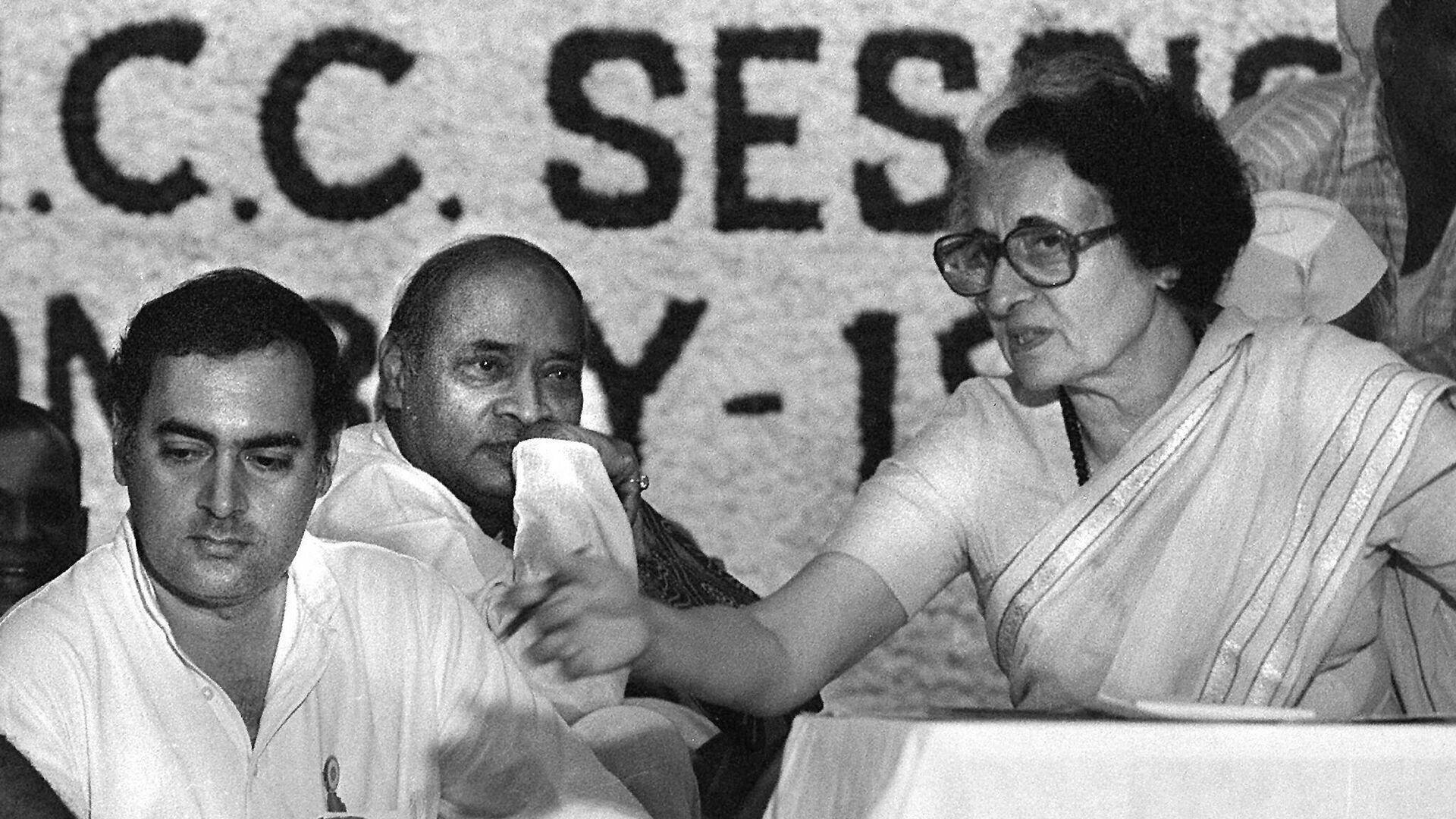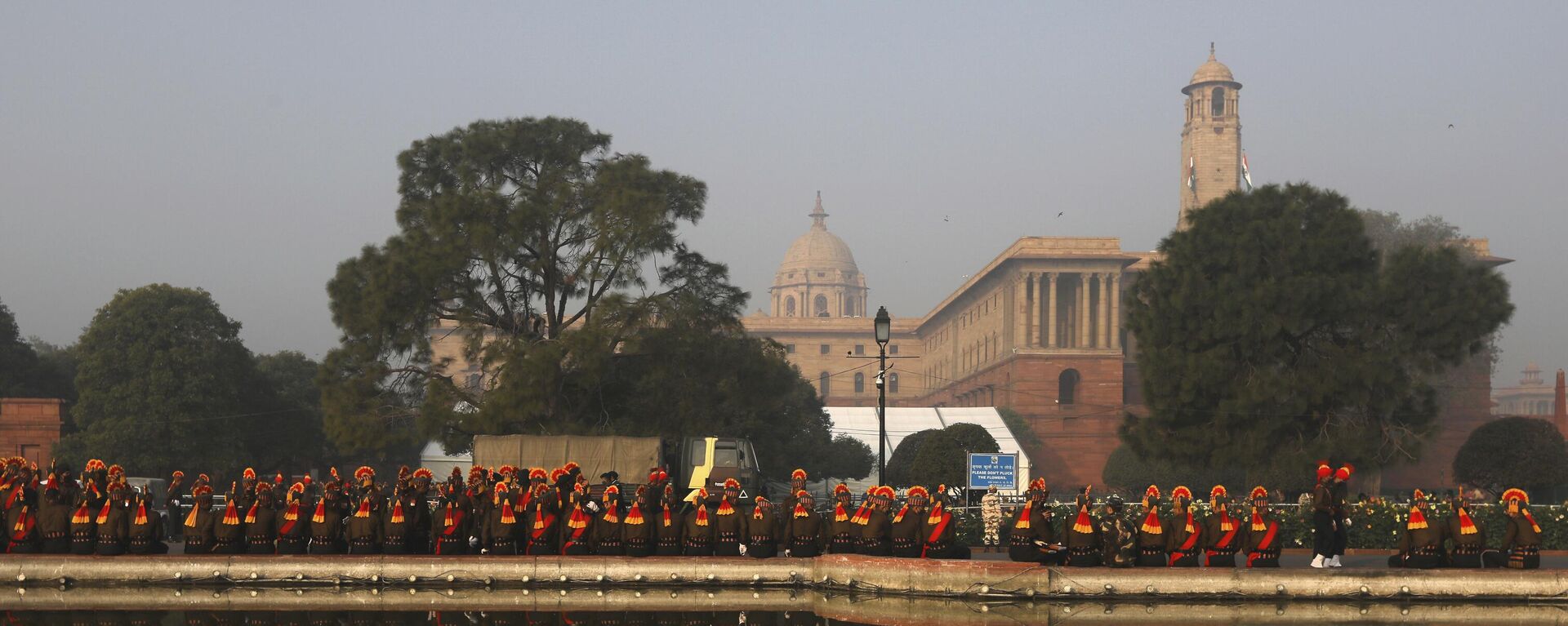https://sputniknews.in/20231030/why-was-indias-ex-pm-indira-gandhi-assassinated-5138983.html
Why Was India's Ex-PM Indira Gandhi Assassinated?
Why Was India's Ex-PM Indira Gandhi Assassinated?
Sputnik India
India's only female Prime Minister, Indira Priyadarshini Gandhi, who served the nation for fifteen years, was shot dead by two of her security guards on 31 October 1984.
2023-10-30T22:48+0530
2023-10-30T22:48+0530
2023-10-30T22:48+0530
indira gandhi
rahul gandhi
jawaharlal nehru
india
delhi
europe
indian national congress (inc)
indian parliament
government of india
political controversy
https://cdn1.img.sputniknews.in/img/07e7/0a/0e/4828553_0:0:2048:1153_1920x0_80_0_0_a8e00fe70fcce5b1d7513bc40fffffea.jpg
Indira Gandhi was the daughter of India's first prime minister, Jawaharlal Nehru, and was known for bringing many unpopular reforms and leading the India-Pakistan 1971 war. On her 39th death anniversary, Sputnik India explores her life and why she was assassinated.Who Was Indira Gandhi?Born on 19 November 1917, Indira was the only child of Kamala and Jawaharlal Nehru. Both her parents were part of the freedom struggle and the Indian National Congress (INC).She completed her education in Delhi, Allahabad, and then in Europe. In fact, she also attended the legendary and Nobel Laureate Rabindra Nath Tagore's Institute Shantiniketan, who named her Priyadarshini.Meanwhile, Indira's father was always ensuring that she had enough understanding and awareness of the world and politics. When Indira was just 10 years old, Jawaharlal Nehru was in jail by the British. During that period, Nehru wrote some 30 letters, which not only provided insight into the father-daughter personal relationship, but Nehru also shared knowledge of reconstructing the history of India, the evolution of human societies and civilisation, etc.She grew up as a silent and observing child, seeing people around her involved in the freedom struggle. When she was 12 years old, Indira formed the "Vanar Sena" (loosely translated as the "Monkey Brigade") of children to support India's non-cooperation movement against the British.Indira got married in March 1942 to Feroze Gandhi, as per Hindu ritual. They had two sons — Rajiv Gandhi and Sanjay Gandhi.In September 1960, Feroze Gandhi passed away due to a heart attack.What Was Reason for Assassination of Indira Gandhi?In June 1984, Indira Gandhi ordered a military operation at the Sikh's sacred shrine, the Golden Temple, where it was believed that militants along with their leader Jarnail Singh Bhindranwale were there. They were demanding a separate homeland for Sikhs - Khalistan.The Indian Army launched Operation Blue Star at the Sikh Shrine Golden Temple from 1 to 8 June 1984, resulting in some 554 militants along with civilians dead, and 1,180 people injured.Operation Blue Star and other events at the time created a sense of alienation furore among many Sikhs towards the Indian government.After Operation Blue Star, intelligence warned that enraged militant Sikhs might try to assassinate her. In fact, a day before her shooting, she, at an electoral rally, predicted that she might get killed.As per the record and media reports, Indira was scheduled to meet British documentary maker Peter Ustinov at the Prime Minister's Office.She got ready for her documentary and had breakfast. At 9:10 am, she left her residence accompanied by constable Narayan Singh, personal security officer Rameshwar Dayal, and personal secretary RK Dhawan.While walking down to her office (the PMO was adjacent to her residence) on 31 October 1984, one of her security guards, Beant Singh, opened fire on her from his revolver and another assailant, Satwant Singh, who was standing nearby, shot 30 bullets at her; 23 passed through her body, and seven remained inside her. Both assailants were Sikhs.Security officer Rameshwar Dayal was also hit and injured.She was taken to AIIMS, Delhi, and after five hours of operation, she was pronounced dead.After her death, riots broke out in Indian cities, where Sikhs were targeted, and about 6,000 Sikhs were killed in the following two days across the country. At the same time, many unconfirmed reports estimated the number of deaths at about 8,000-17,000.Indira Gandhi's Journey to PoliticsAfter India's independence in 1947, Indira Gandhi worked as an assistant to her father, Jawaharlal Nehru, accompanying him on many foreign trips and was part of his brainstorming team.She was an active member of the Indian National Congress.Indira was part of various Congress party committees of the president of the party from 1955 to 1959.After the death of her father in 1964, she was appointed as a lawmaker in the upper house of parliament and also minister of information and broadcast.In 1966, she was appointed as prime minister after the sudden demise of then-PM Lal Bahadur Shastri.In 1967, she faced the first electoral test in the national election, which she won; however, the Congress party's victory margin was reduced.Gandhi, in her tenure as PM in 1967, introduced a number of social welfare schemes, including the nationalisation of 14 banks and the formation of the Garibi Hatao (Eradicate Poverty) program.She successfully won the 1971 general election and also won the 1971 war against Pakistan, which led to the creation of the state of Bangladesh.In 1975, she announced an Emergency for 21 months across the country as she was convicted of an election offence by the Allahabad High Court and barred from politics for six years.This went down as one of the most infamous decisions by any prime minister, as during the emergency, many restrictions were introduced curtailing the rights of civil liberties and press freedom, as well as crackdowns against Congress' political oppositions and activists.Indira and the Congress party lost the 1977 general election; however, she was re-elected in 1980 after the fall of the Janata government.
https://sputniknews.in/20231014/who-has-been-indias-youngest-prime-minister---4795649.html
india
delhi
europe
Sputnik India
feedback.hindi@sputniknews.com
+74956456601
MIA „Rossiya Segodnya“
2023
Deexa Khanduri
https://cdn1.img.sputniknews.in/img/07e6/0c/13/138923_52:0:533:481_100x100_80_0_0_cadf23d341691fc65ff2b22fd1afe584.jpg
Deexa Khanduri
https://cdn1.img.sputniknews.in/img/07e6/0c/13/138923_52:0:533:481_100x100_80_0_0_cadf23d341691fc65ff2b22fd1afe584.jpg
News
en_IN
Sputnik India
feedback.hindi@sputniknews.com
+74956456601
MIA „Rossiya Segodnya“
Sputnik India
feedback.hindi@sputniknews.com
+74956456601
MIA „Rossiya Segodnya“
Deexa Khanduri
https://cdn1.img.sputniknews.in/img/07e6/0c/13/138923_52:0:533:481_100x100_80_0_0_cadf23d341691fc65ff2b22fd1afe584.jpg
indira gandhi, indira gandhi death, indira gandhi husband, indira gandhi husband name, indira gandhi death date, indira gandhi photo, indira gandhi father name, indira gandhi images, indira gandhi assassination, indira gandhi birthday, indira gandhi history, indira gandhi nahar, indira gandhi son, about indira gandhi, how indira gandhi died, indira gandhi date of birth, husband of indira gandhi, who is indira gandhi
indira gandhi, indira gandhi death, indira gandhi husband, indira gandhi husband name, indira gandhi death date, indira gandhi photo, indira gandhi father name, indira gandhi images, indira gandhi assassination, indira gandhi birthday, indira gandhi history, indira gandhi nahar, indira gandhi son, about indira gandhi, how indira gandhi died, indira gandhi date of birth, husband of indira gandhi, who is indira gandhi
Why Was India's Ex-PM Indira Gandhi Assassinated?
Deexa Khanduri
Sputnik correspondent
India's only female prime minister, Indira Priyadarshini Gandhi, who served the nation for 15 years, was shot dead by two of her security guards on 31 October 1984.
Indira Gandhi was the daughter of India's first prime minister, Jawaharlal Nehru, and was known for bringing many unpopular reforms and leading the India-Pakistan 1971 war. On her 39th death anniversary, Sputnik India explores her life and why she was assassinated.
Born on 19 November 1917, Indira was the
only child of Kamala and Jawaharlal Nehru. Both her parents were part of the freedom struggle and the Indian National Congress (INC).
She completed her education in Delhi, Allahabad, and then in Europe. In fact, she also attended the legendary and Nobel Laureate Rabindra Nath Tagore's Institute Shantiniketan, who named her Priyadarshini.
Meanwhile, Indira's father was always ensuring that she had enough understanding and awareness of the world and politics. When Indira was just 10 years old, Jawaharlal Nehru was in jail by the British. During that period, Nehru wrote some 30 letters, which not only provided insight into the father-daughter
personal relationship, but Nehru also shared knowledge of reconstructing the history of India, the evolution of human societies and civilisation, etc.
She grew up as a silent and observing child, seeing people around her involved in the freedom struggle. When she was 12 years old, Indira formed the "Vanar Sena" (loosely translated as the "Monkey Brigade") of children to support India's non-cooperation movement against the British.
Indira got married in March 1942 to Feroze Gandhi, as per Hindu ritual. They had two sons — Rajiv Gandhi and Sanjay Gandhi.
In September 1960, Feroze Gandhi passed away due to a heart attack.
What Was Reason for Assassination of Indira Gandhi?
In June 1984, Indira Gandhi ordered a military operation at the Sikh's sacred shrine, the Golden Temple, where it was believed that militants along with their leader
Jarnail Singh Bhindranwale were there. They were demanding a separate homeland for Sikhs - Khalistan.
The Indian Army launched Operation Blue Star at the Sikh Shrine Golden Temple from 1 to 8 June 1984, resulting in some 554 militants along with civilians dead, and 1,180 people injured.
Operation Blue Star and other events at the time created a sense of alienation furore among many Sikhs towards the Indian government.
After Operation Blue Star, intelligence warned that enraged militant Sikhs might try to assassinate her. In fact, a day before her shooting, she, at an electoral rally, predicted that she might get killed.
"I am here today, I may not be here tomorrow. Nobody knows how many attempts have been made to shoot me. I do not care whether I live or die. I have lived a long life and I am proud that I spent the whole of my life in the service of my people", Indira said on 30 October 1984 at an election rally in Orissa.
As per the record and media reports,
Indira was scheduled to meet British documentary maker Peter Ustinov at the Prime Minister's Office.
She got ready for her documentary and had breakfast. At 9:10 am, she left her residence accompanied by constable Narayan Singh, personal security officer Rameshwar Dayal, and personal secretary RK Dhawan.
While walking down to her office (the PMO was adjacent to her residence) on 31 October 1984,
one of her security guards, Beant Singh, opened fire on her from his revolver and another assailant, Satwant Singh, who was standing nearby, shot 30 bullets at her; 23 passed through her body, and seven remained inside her. Both assailants were Sikhs.
Security officer Rameshwar Dayal was also hit and injured.
She was taken to AIIMS, Delhi, and after five hours of operation, she was pronounced dead.
After her death, riots broke out in Indian cities, where Sikhs were targeted, and about 6,000 Sikhs were killed in the following two days across the country. At the same time, many unconfirmed reports estimated the number of deaths at about 8,000-17,000.
Indira Gandhi's Journey to Politics
After India's independence in 1947, Indira Gandhi worked as an assistant to her father, Jawaharlal Nehru, accompanying him on
many foreign trips and was part of his brainstorming team.
She was an active member of the Indian National Congress.
Indira was part of various Congress party committees of the president of the party from 1955 to 1959.
After the death of her father in 1964, she was
appointed as a lawmaker in the upper house of parliament and also minister of information and broadcast.
In 1966, she was appointed as prime minister after the sudden demise of then-PM Lal Bahadur Shastri.
In 1967, she faced the first electoral test in the national election, which she won; however, the Congress party's victory margin was reduced.
Gandhi, in her tenure as PM in 1967, introduced a number of social welfare schemes, including the nationalisation of 14 banks and the formation of the Garibi Hatao (Eradicate Poverty) program.
She successfully won the 1971 general election and also won the 1971 war against Pakistan, which led to the creation of the state of Bangladesh.
In 1975, she announced an Emergency for 21 months across the country as she was convicted of an election offence by the Allahabad High Court and barred from politics for six years.
This went down as one of the most infamous decisions by any prime minister, as during the emergency, many restrictions were introduced curtailing the rights of civil liberties and press freedom, as well as crackdowns against Congress' political oppositions and activists.
Indira and the Congress party lost the 1977 general election; however, she was re-elected in 1980 after the fall of the Janata government.




